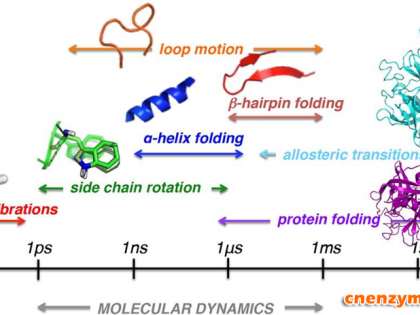Following are several labs that can be found online:
1. Lactase enzyme lab (50 minutes)
This lab will examine the specificity of an enzyme (lactase) to a specific substrate (lactose). Students will observe the actions of the enzyme and how shape is important to enzyme reactions.
https://www.learnnc.org/lp/pages/3398
2. Enzyme Labs using Jell-O
This lab will test for the presence of enzymes in fruit and the specificity of those enzymes, as well as to identify and show the susceptibility of enzymes to certain environmental factors (temperature and pH) originating in the enzyme's environment.
https://www.accessexcellence.org/AE/AEPC/WWC/1991/enzymes.php
3. What Affects the Function of an Enzyme?
This lab focuses on the effects of changing pH on the function of a catalyse. The main ingredient involves potatoes.
https://docs.google.com/gview?a=v&q=cache:s71CtrzJmy4J:mvhs.shodor.org/edgrid/enzyme/enzmod3exp.pdf+enzyme+potato+labs&hl=en&gl=us
4. Six different Enzyme labs from the same resource:
Catylase - Observing an enzyme
In this lab, you will study an enzyme that is found in the cells of many living tissues. The name of the enzyme is catalase (KAT-uh-LAYSS); it speeds up a reaction which breaks down hydrogen peroxide, a toxic chemical, into 2 harmless substances--water and oxygen.
Lactose Digestion - By the Enzyme Lactase
Enzymes are important components of digestion because they break down large food molecules into smaller chemical subunits. One digestive enzyme, lactase, breaks down lactose (a disaccharide found in milk) into the monosaccharides glucose and galactose. In this investigation you will observe the effectiveness of a milk-treatment product that contains lactase by testing milk samples for the presence of glucose.
Enzyme Action on Starch – Amylase
In this experiment you will observe the action of the enzyme amylase on starch. Amylase is found in our saliva. Amylase changes starch into a simpler form: the sugar maltose, which will react positively with Benedict's solution.
Enzyme Action in Germinating Seeds - Amylase
The seed is a remarkable structure that enables seed plants to survive unfavorable conditions. Each seed contains an embryo that can grow into a mature plant. In addition, the seeds of flowering plants have structures called cotyledons. The cotyledons store food for use by the embryo in the form of starch. Starch is long chains of glucose molecules. The embryo needs to break these chains, forming sugars it can use for energy. It does this by releasing the enzymes alpha-amylase and beta-amylase. In this lab, you will investigate this enzyme action, by first testing a dry bean seed for the presence of glucose, then testing a been seed that has germinated.
Finding the Optimum pH for 2 Protease Enzymes - Pepsin and Trypsin
During digestion, food is broken down in stages by a series of chemical reactions. Digestive enzymes catalyze these chemical reactions. A protease is an enzyme that breaks down proteins. Two proteases pepsin and trypsin, are secreted at different stages and at different sites during digestion. Each digestive enzyme works best at an optimum pH. The stomach has a pH of about 2, while the small intestine has a pH of between 7 and 8. In this lab, you will determine, through observation, which protease is secreted into the stomach, and which is secreted into the small intestine.
Hydrolysis of Sucrose by the Enzyme Inverstase
In this lab, you will demonstrate the production of the enzyme invertase (sucrase) by yeast. The enzyme invertase catalyzes the hydrolysis of the disaccharide sucrose to invert sugar. Invert sugar is a mixture of glucose and fructose, which are both monosaccharides. Yeast cannot directly metabolize (ferment) sucrose. For the yeast to utilize sucrose as an energy source, it must first convert it to the fermentable monosaccharides glucose and fructose. Benedict's solution is a test reagent that reacts positively with simple reducing sugars. All monosaccharides and most disaccharides are reducing sugars, possessing a free carbonyl group (=C=O). Sucrose is an exception in that it is not a reducing sugar. A positive Benedict's test is observed as the formation of a brownish-red cuprous oxide precipitate. Both glucose and fructose test positive with benedict's solution, sucrose does not.
Note: Other interesting labs are also found in this link including scientific method, food-testing labs, plant labs, genetics labs, and more!
https://www.geocities.com/CapeCanaveral/Hall/1410/lab-B-contents.html



